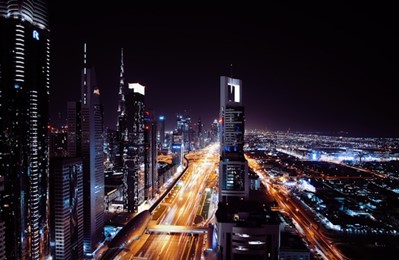
In the heart of bustling cities, where space is a premium and land is scarce, real estate development firms face the challenge of creating new living spaces within the constraints of existing infrastructure. This challenge is met with innovative strategies that leverage and adapt existing infrastructure to develop apartments, condominiums, and other living spaces. By repurposing old buildings and integrating modern amenities with established systems, developers are transforming urban landscapes and addressing housing shortages effectively.
Repurposing Existing Structures
One of the most effective ways commercial real estate developers utilize existing infrastructure is by repurposing older buildings. Urban areas are often dotted with obsolete industrial buildings, warehouses, and historic structures that, while no longer suited to their original uses, possess valuable attributes for new developments.
Adaptive Reuse
Adaptive reuse involves converting these old structures into residential spaces. For example, former factories and warehouses are often transformed into loft-style apartments or condominiums. This approach not only preserves the architectural character of the buildings but also saves resources that would be expended in demolishing and rebuilding. Additionally, it can be a cost-effective way to increase housing supply in dense urban areas.
Historic Preservation
Many urban areas are home to historic buildings with architectural significance. Real estate developers, often in collaboration with local preservation societies, undertake projects that restore and repurpose these structures. By maintaining the exterior façades and integrating modern interiors, developers can offer unique living spaces that blend historical charm with contemporary comforts.
Integrating Modern Amenities
While repurposing existing structures, developers must also ensure that the infrastructure meets contemporary standards for residential living. This involves integrating modern amenities and technologies into older buildings.
Infrastructure Upgrades
Older buildings often require substantial upgrades to meet current building codes and residential standards. Developers may need to update electrical systems, plumbing, heating, ventilation, and air conditioning (HVAC) systems to ensure they are safe and efficient. These upgrades are crucial in making the buildings suitable for modern living.
Smart Home Integration
Modern living spaces frequently incorporate smart home technologies, such as automated lighting, climate control, and security systems. Real estate firms who convert existing buildings often integrate these technologies to enhance comfort and convenience. This integration helps attract tech-savvy residents and adds value to the properties.
Utilizing Urban Infrastructure
Urban infrastructure such as transportation networks, utilities, and public amenities plays a vital role in the success of residential developments. Real estate developers strategically use this existing infrastructure to enhance the appeal and functionality of new living spaces.
Transportation Access
Proximity to public transportation is a significant factor for urban living. Developers often select sites that are well-connected by subway lines, bus routes, or bike lanes. By leveraging existing transportation infrastructure, developers can ensure that residents have easy access to the broader city, enhancing the attractiveness of the residential project.

Utilities and Services
Existing utilities such as water, sewer, and electricity infrastructure can be a major advantage. Developers often work with city planners to assess the capacity of these systems and make necessary adjustments or upgrades. Efficient use of existing utilities can reduce the cost and complexity of new developments.
Public Amenities
Proximity to parks, schools, shopping areas, and other public amenities adds value to residential projects. Developers look for locations near these amenities to offer residents a higher quality of life. In some cases, developers may also collaborate with local governments to improve or expand these amenities as part of their projects.
Design and Aesthetic Considerations
The design of new residential spaces in existing buildings must balance modern needs with the character of the original structure. Developers and architects work together to create designs that respect the building’s history while providing contemporary living conditions.
Architectural Harmony
Successful projects often harmonize the new with the old. For example, retaining original architectural elements such as exposed brick walls or large industrial windows can create unique, desirable living spaces. At the same time, modern design features like open floor plans and updated fixtures are integrated to meet current living standards.
Sustainable Design
Sustainability is a key consideration in modern development. Developers incorporate energy-efficient systems, sustainable materials, and eco-friendly practices into their projects. This commitment to sustainability not only benefits the environment but also appeals to environmentally conscious residents.
Conclusion
Real estate development firms play a crucial role in transforming urban areas by creatively utilizing existing infrastructure to develop apartments, condominiums, and other living spaces. By repurposing old buildings, integrating modern amenities, and leveraging urban infrastructure, developers can address housing shortages and enhance the vibrancy of cities. This approach not only maximizes the value of existing resources but also contributes to the sustainable growth and revitalization of urban environments. As cities continue to evolve, the innovative use of existing infrastructure will remain a key strategy in shaping the future of urban living.


No comments.